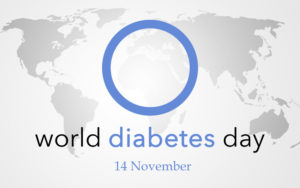

There are different types of diabetes like Type II diabetes, Latent autoimmune diabetes in adults (LADA), Maturity-onset diabetes of the young (MODY), Juvenile diabetes or Type I diabetes, Diabetic ketoacidosis. But only few types of Diabetes are common among youngsters. Types of Diabetes commonly affecting the young can be understood with this article.
Type II diabetes are uncommon among children but cases can be seen in young population of early 30’s today. Risk factors include – obesity, associated thyroid problems, eating disorders, lack of lifestyle activities and history of family suffering from diabetes. There are other types of diabetes common in young people –Latent autoimmune diabetes in adults (LADA), a slow progressing form of autoimmune diabetes and Maturity-onset diabetes of the young (MODY), a rare kind of diabetes. The condition rises due to a mutation, in one of the genes that impairs the process of insulin production. Due to this, it affects the way the body uses and stores sugar from food. The treatment process differs so a proper diagnosis is important.
Juvenile diabetes or Type I diabetes is a chronic condition where the children have a defective pancreas by birth that causes the pancreas to produce little or no insulin. There is no cure for this condition but medication can help to lead a normal life. They are insulin dependent and are more prone to develop Diabetic ketoacidosis. Diabetic ketoacidosis is a serious diabetes complication that requires medical attention. In this condition, the body produces excess blood acids also known as ketones. Symptoms include stomach pain, vomiting, lethargic, fatigue and dizziness.
Importance of starting Insulin Therapy at an early stage:


Starting insulin therapy at an early stage lowers the risk of developing long term complications of diabetes such as kidney and heart diseases. It also helps the patients to avoid frequent hospitalisation. Associating with this year theme – Family and Diabetes, the following can be practiced by the family members in the management, care, prevention and education of diabetes.
- Compliance to see that the patient gets the medication in time
- Hypoglycaemia– Look out for low sugar symptoms such as dizziness, sweating and confusions. It is advisable to give simple sugar to the patients immediately if they are experiencing these symptoms, consult a doctor in case the symptoms continue to persist. One can check for the sugar levels in the blood using a Glucometer (a device to monitor concentration of glucose in the blood), anything below 70 mg/dl is considered to have low sugar level
- Adhere to a diet plan as advised by the doctor
- Ensure regular exercise of the patient
Case Scenarios:
Case 1: 26-year-old Anil (name changed) was presented with complaints of feeling tired quickly and increased thirst for the last 6 months. He was overweight and hardly performed any exercise and was heavily dependent on outside/junk food. Anil’s father was on treatment for diabetes, this clearly shows that he has a family history of diabetes. Lack of exercise, sedentary lifestyle and consumption of high calorie food trigger the onset of diabetes in Anil. Despite being young, he had Type II Diabetes Mellitus and needed to be started on treatment. A healthy lifestyle, regular exercise and avoidance of overindulging in high calorie food can prevent or delay onset of diabetes mellitus.
Case 2:Mrs Anitha (name changed), a 62-year-old woman who is a known patient of diabetes was admitted with high grade fever and unresponsiveness and found to have Hypoglycaemia (low blood sugar). Fever work up showed E.coli in urine and CT showed infection in the kidneys which is a severe form of urinary infection and was getting treated for that and was improving symptomatically with injectable antibiotic.Meanwhile, patient had concerns regarding her leg pain and weakness. On examination patient was found to have reduced power in the thigh muscles for which muscle and nerve studies were done which revealed nerve damage which can be attributed to uncontrolled diabetes. Neurology team were involved and opined as diabetic amyotrophy (occurs more in patients with diabetes with type II than type I) for which she was initiated on muscle strengthening exercises and supportive medication. Anitha got discharged after a week of hospital stay and is on rehabilitation and physiotherapy with which she is gradually improving.
There are some complications of the disease which are rare but very bothering and can restrict a patient’s mobility and diabetic amyotrophy is one of them. Treatment for Diabetic Amyotrophy-control blood sugar level in blood, physiotherapy and rehabilitation.


Dr Subrata Das
Internal Medicine & Diabetology
Sakra World Hospital, Bengaluru- 560103
Ph: 080 4969 4969












